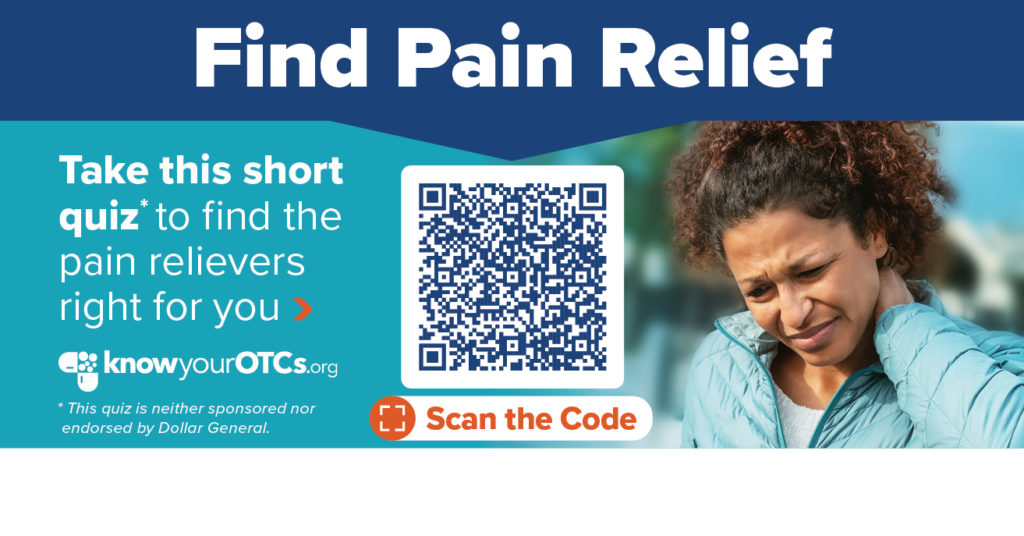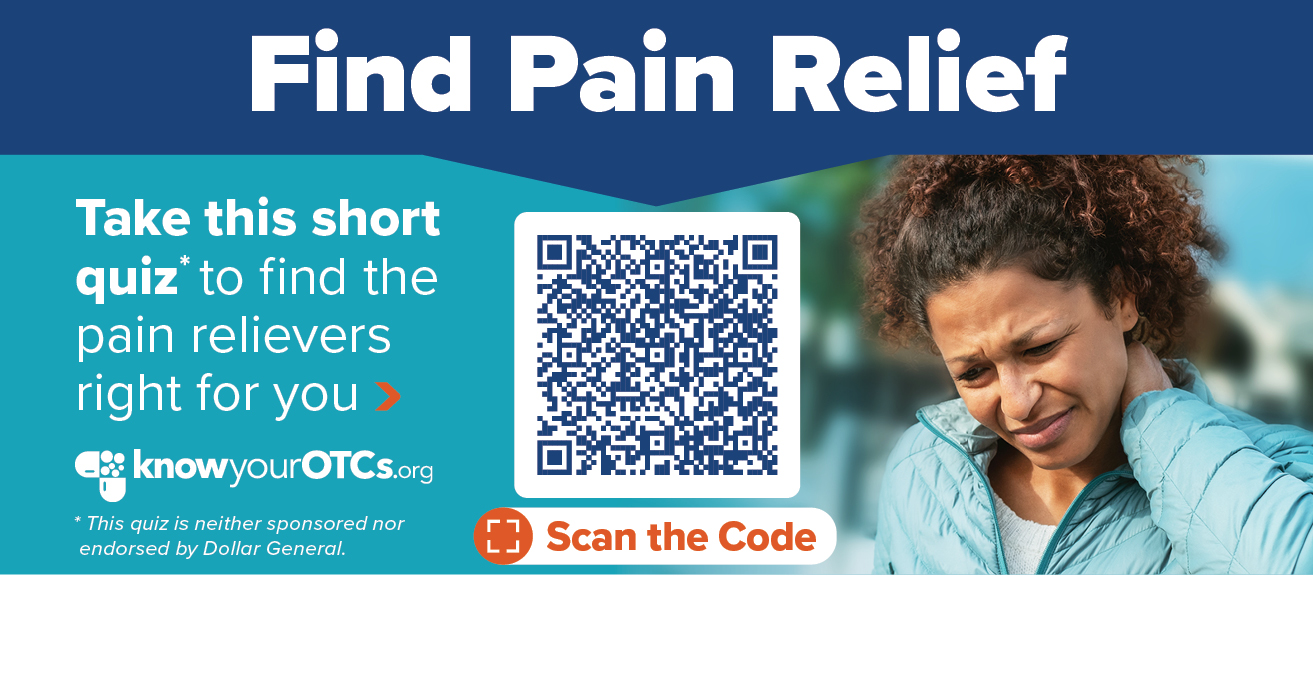Health is “made” where we live, work, play, pray, learn….and shop. I spend a lot of time these days in the growing health/care ecosystem where retail health is broadening to address social determinants and drivers of health – namely food, transportation, broadband access, education, environment, and financial wellness – all opportunities for self-care and health engagement.
For many years, I have followed the activities of CHPA, the Consumer Healthcare Products Association, and have participated in some of their conferences. Their recent announcement of a collaboration with Dollar General speaks to the growing role of self-care for all people.

To learn more about the DG-CHPA Educational Foundation pilot program, I was grateful to spend time brainstorming via Microsoft Teams this week with Anita Brikman, Senior Vice President, Communications & Public Affairs, and Executive Director of the CHPA Educational Foundation.

CHPA represents the vast majority of manufacturers and marketers of over-the-counter medicines, dietary supplements, and consumer-facing medical devices, Anita explained. Since 2020, the organization has expanded its mission beyond OTC meds to be a “self-care association,” Anita explained.

The CHPA Educational Foundation is the non-profit charitable arm of CHPA that advocates for consumers’ safe and responsible use of over-the-counter medicines and supplements. Part of that effort is the Foundation’s consumer-facing website, Know Your OTCs, which provides additional information on ingredients, symptom treatment, vitamins, and supplements.
This is where the new OTC pain reliever safety quiz resides online: the heart of the Dollar General collaboration.
I asked Anita how this program evolved. She noted that DG has made “significant strides to prioritize health and wellness in their stores,” which I also recognized when the company appointed a Chief Medical Officer, Dr. Albert Wu, discussed here in Health Populi.
Dr Wu has “opened the door” for greater collaborations on health education. CHPA had been in discussions with Dollar General for some time. It’s important to note that central to the CHPA Educational Foundation’s mission is serving people with lower health literacy as well as reaching consumers living in underserved communities or “health deserts,” geographies lacking health care services – in particular, primary care.
“Dollar General has a unique footprint across the U.S., when you think about all the communities they are in, and sometimes the only retailer in small, rural towns,” Anita explained, a perfect match and alignment for bolstering health education on a particularly crucial symptom for self-care: pain relief.

The project involves three CHPA member companies who are known as competitors in this category:
- Haleon (the newly-named consumer health company that recently spun out of GSK), maker of Advil;
- Johnson & Johnson (J&J), manufacturer of Tylenol; and,
- Perrigo, which manufactures private label/generic products, in this case Dollar General’s brand of pain relief meds DG Health acetaminophen and DG health ibuprofen.
The 3 companies have come together to address the fundamental issue of helping under-served health consumers seeking OTC pain relief medication better understand how to choose between products based on their individual criteria such as age, pre-existing conditions and nature and what other medications they may be taking.

A Dollar General shopper can access the 8-question OTC Pain Relief Interactive Quiz via a smartphone by scanning a QR code from a store shelf ad like the one shown here. Going through the eight questions helps the consumer understand risk factors and personal issues that are important in figuring out the right medication to use. The program is available in both English and Spanish.
While all of this information can be found on the “Drug Facts” label printed on all OTC medicines packaging, that language and formatting can be difficult to understand and potentially off-putting.
CHPA and Dollar General will assess the experiences, outcomes and learnings from this program after eight weeks.
CHPA’s Educational Foundation has partnered with other retailers and manufacturers to educate and inspire safe medicines storage and disposal (via the “Up and Away” campaign with the CDC), with CVS for National Safety Month, and with Walmart on the “Know Your Dose” campaign, among others.
In 2023, CHPA hopes to deploy similar programs based on the learnings from the Dollar General pilot expanding in the dollar channel and through community-based pharmacies.
Health Populi’s Hot Points: CHPA’s tagline is “Taking healthcare personally.” That’s where retail health in peoples’ communities close-to-home and at-home plays a key role.
Consumers’ reliance on OTCs has become even more pronounced through the coronavirus pandemic era, and will persist in the coming months and years.

Furthermore, “We understand shoppers are budget conscious,” Anita observed. “This project can help inform a choice for a person who can’t afford to make the wrong choice.” In the current and ongoing inflationary era for U.S. households, value is in the eye of all consumers in and beyond health care. Inflation hits lower-income households especially hard. And inflation is also coming for health care prices which have somewhat lagged behind food and energy costs.
“America’s dollar stores are Amazon-proof retail powerhouses,” an analysis of the category in Quartz asserts. “Typically drawing the cost-conscious, dollar stores are now seeing even wealthier customers shop for necessities to stretch their budgets,” the Quartz article notes.
As I noted in my book HealthConsuming, dollar and convenience stores (“C-stores”) have been expanding their shelf space beyond “smokes and Cokes,” most recently adding SKUs to the health and beauty and fresh-er food shelves.
Dollar General’s collaboration with CHPA is a prime example of how retail health can address several key dimensions and drivers of health to empower people toward effective self-care that can bolster individual and public health: these factors are health access, health literacy, and health equity.
Underpinning all of these are financial wellbeing and value, which are embedded in all U.S. health consumers’ healthcare choices in 2022 and will be so well into 2023. Data from Qualtrics demonstrates more patients “distancing” themselves from healthcare due to cost than due to fear of exposure to COVID-19, Adrienne Boissy, Qualtrics’ Chief Medical Officer, explained. A leading expert on patient experience, Adrienne recognizes that the medical-financial experience is now fully baked into the American patient experience.
Or in my own take on this….the patient is the payor.
Building on that premise, CHPA’s latest research on the value of over-the-counter medicines was published on 1 December, calculating the returns-on-investment for spending on various OTC categories. Related to the Dollar General-pain meds project, CHPA’s research with IRI estimated that nearly $7 could be saved for every $1 spent on analgesics. Read more on the value of OTCs in the paper linked here.





 Thanks to Feedspot for naming this blog, Health Populi, as a
Thanks to Feedspot for naming this blog, Health Populi, as a